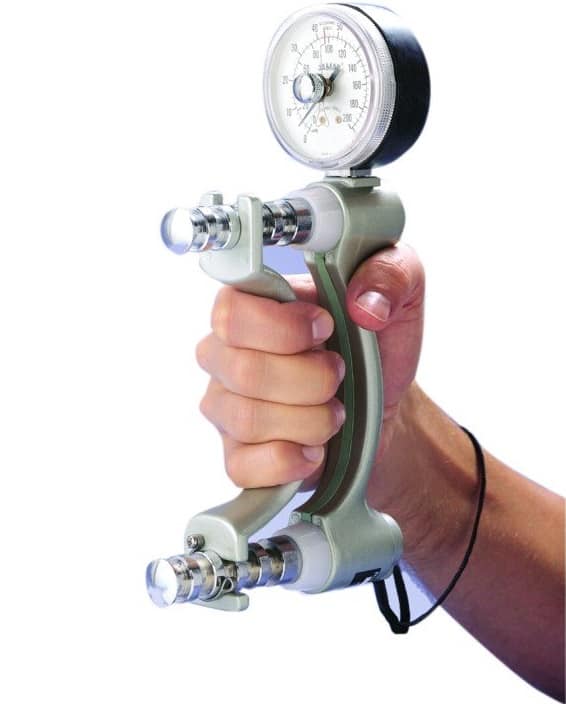
Patients with inoperable stage I non-small cell lung cancer (NSCLC) treated with stereotactic body radiotherapy (SBRT) have an excellent oncological prognosis, but a high mortality rate due to co-morbidities. Therapeutic decisions are influenced by factors such as the WHO performance status, but refinement with more objective factors could prove beneficial. With this in mind, a Dutch research team has demonstrated that a simple test of handgrip strength provides a good indicator of short- and long-term survival in such patients.
The study, conducted at the MAASTRO Clinic in The Netherlands, examined 226 NSCLC patients who were about to receive SBRT. Patients were asked to grip the handle of hand dynamometer (a device that measures grip strength) as hard as they could for 3 s, three times for each hand. The test results were adjusted to take account of gender, age and height.
The researchers observed handgrip weakness (defined according to the norm in the general population) in 31% of patients, whereas 69% had no weakness. Among those with handgrip weakness, only 12% were still alive five years later, while 40% of patients with strong handgrips were still alive. They note that even at 1-year, handgrip was an independent prognostic factor for overall survival. Stéphanie Peeters, a radiation oncologist at the MAASTRO Clinic, will present the findings tomorrow at the ESTRO 37 conference in Barcelona.
“We have found that handgrip strength is an objective, cheap and easy way to measure short- and long-term overall survival in stage I patients with NSCLC who are being treated with SBRT with the aim of curing them,” said Peeters. “The WHO performance status measurement is quantified by a physician, and therefore may be prone to subjectivity. The handgrip test, on the other hand, is a more objective measure that may provide additional information on the general condition of a patient.”
The extra information provided by the grip strength measurements may help guide physicians in how to manage a patient’s lung tumour, Peeters notes. “In patients with poor prognosis, it may be decided not to give an active treatment, and having an objective measure such as the handgrip test may give more weight to this important decision. Close surveillance may then be an option,” she explained.
The handgrip test now needs to be validated in other patient groups to justify its widespread use. In addition, the researchers do not know whether improving a patient’s general health and fitness might help improve their life expectancy. “Future studies could explore the impact on survival of improving the handgrip strength in patients with weakness before the start of a curative treatment,” said Peeters.



